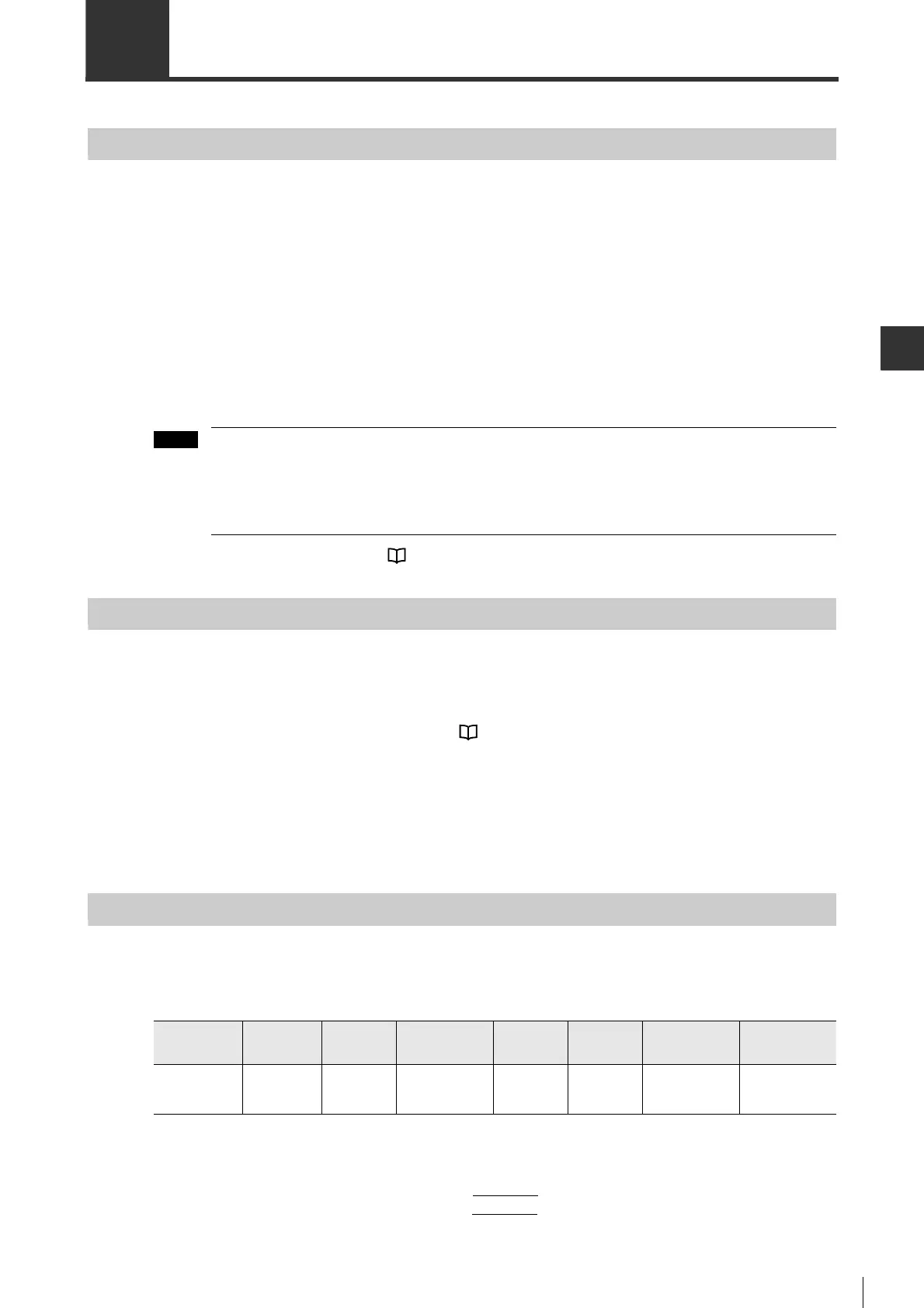5-23
- SV Series User’s Manual -
COMMON PARAMETER SETTING
5-4 Regenerative Resistor Setting
Overview
When the servo motor is in regenerative status, the generated regenerative power will be absorbed by charging of the
smoothing capacitor in the servo amplifier. If the regenerative power exceeds the charging capacity, be sure to use an
external regenerative resistor.
Although servo amplifier of larger than 750W has a built-in regenerative resistor, an external regenerative resistor
should be used if it is necessary to perform operation that may produce a regenerative power beyond its regenerative
capacity.
The following are examples of servo motor in regenerative status.
• Deceleration period when acceleration/deceleration operation is performed
• Continuous moving down operation of a vertical axis
• An operation in which the servo motor is rotated continuously from load side
• Wrong wiring of regenerative resistor may lead to equipment damage or fire.
• Continuous operation cannot be performed in negative load status. In negative load status, the servo
amplifier will be in a continuous regenerative braking status. Regenerative energy from load may
exceeds the allowable range, causing damage to the servo amplifier.
For wiring of regenerative resistor, see "4-6 Wiring Regenerative Resistor", Page 4-38.
How to Select a Regenerative Resistor
Whether a regenerative resistor is needed or not can be determined through the following steps.
1 Use a capacity selection software to determine whether a regenerative resistor is needed.
*
Generally, it is unnecessary to connect a regenerative resistor.
* When capacity selection software is not used, see "How to Select An External Regenerative Resistor", Page 5-
24 to calculate the capacity of the regenerative resistor needed.
2 When a regenerative resistor must be used, a regenerative resistor as an option (OP-84399/OP-87073) should
be used.
When regenerative capacity of the optional regenerative resistor is insufficient, a regenerative resistor can be
provided by the customer.
Regenerative Resistor Setting
■ Regenerative resistor capacity setting
When you connect an external regenerative resistor, be sure to set the regenerative resistor capacity in the
"Regenerative resistor capacity" (SYS_04) setting.
Setting of the regenerative resistor capacity should match the value of allowable capacity of the connected external
regenerative resistor. The setting will vary with the cooling status of the external regenerative resistor. Please use the
following target value as a reference for calculation.
• In the case of natural air cooling: set a value below 20%
of the regenerative resistor capacity (W)
• In the case of forcedl air cooling: set a value below 50%
of the regenerative resistor capacity (W)
* For example, when the regenerative resistor option (OP-84399/OP-87073) is used according to natural air cooling,
rated capacity is 220W x 20% = 44W, and you need set 4 (x10w) in SYS_04 after rounding the ones place.
Parameter
type
Category Level
Parameter
name
Setting
range
Setting
unit
Default
Enable
timing
SYS_04 System Basic
Regenerative
resistor capacity
0 to Servo
amplifier
capacity
10W 0 After changing
